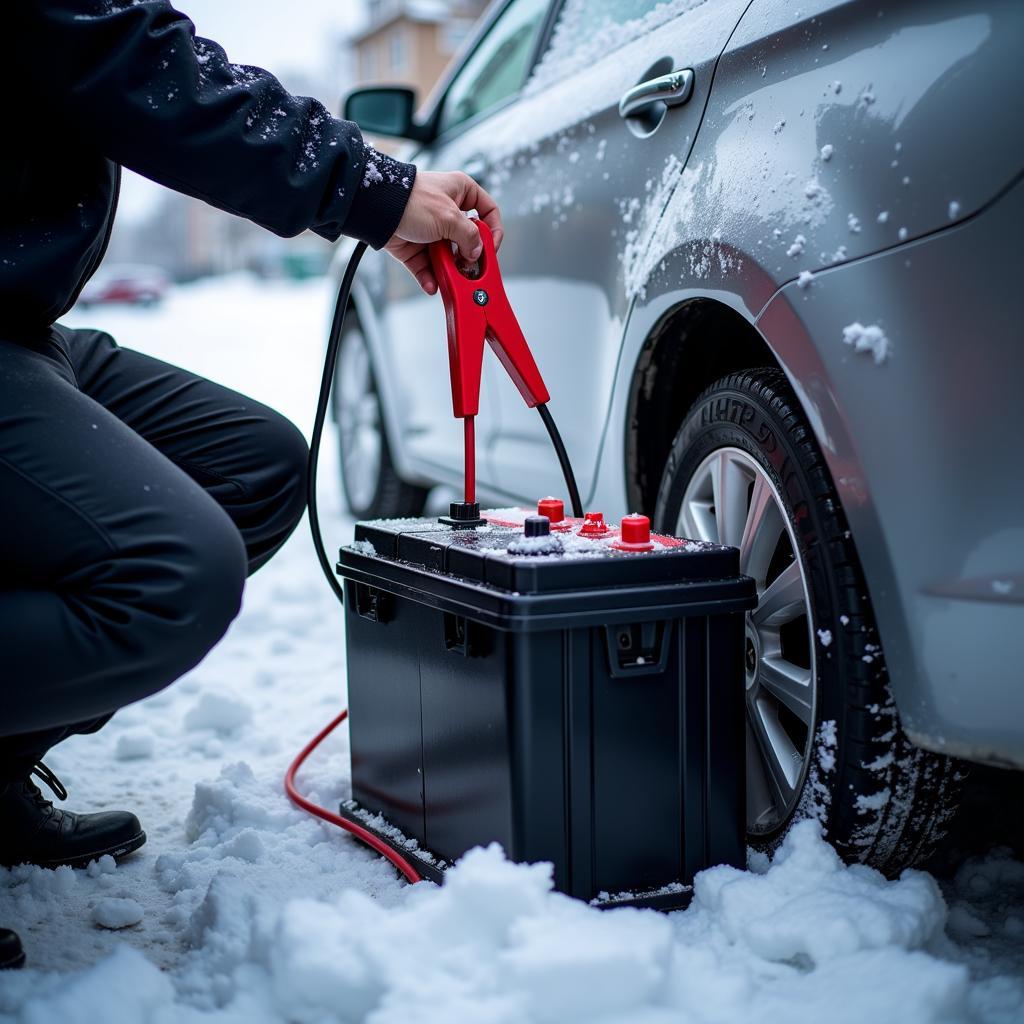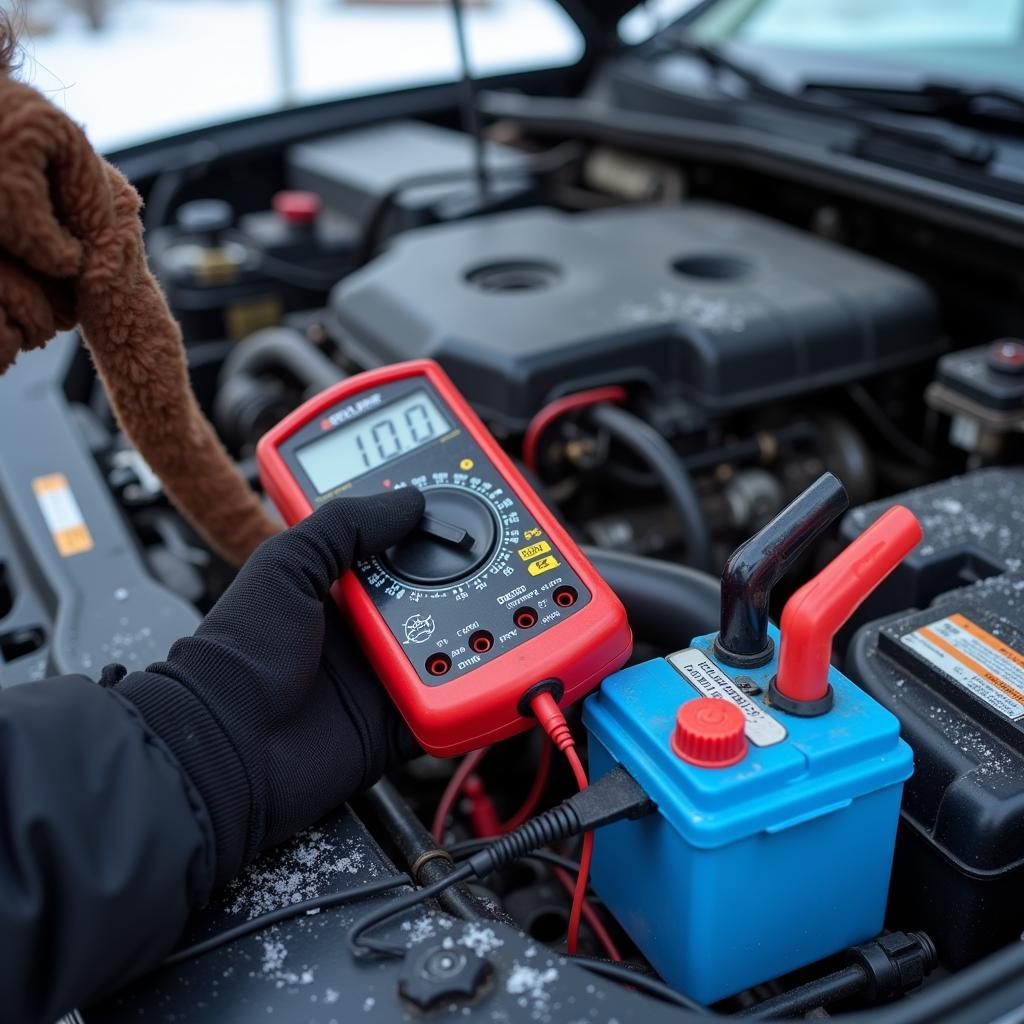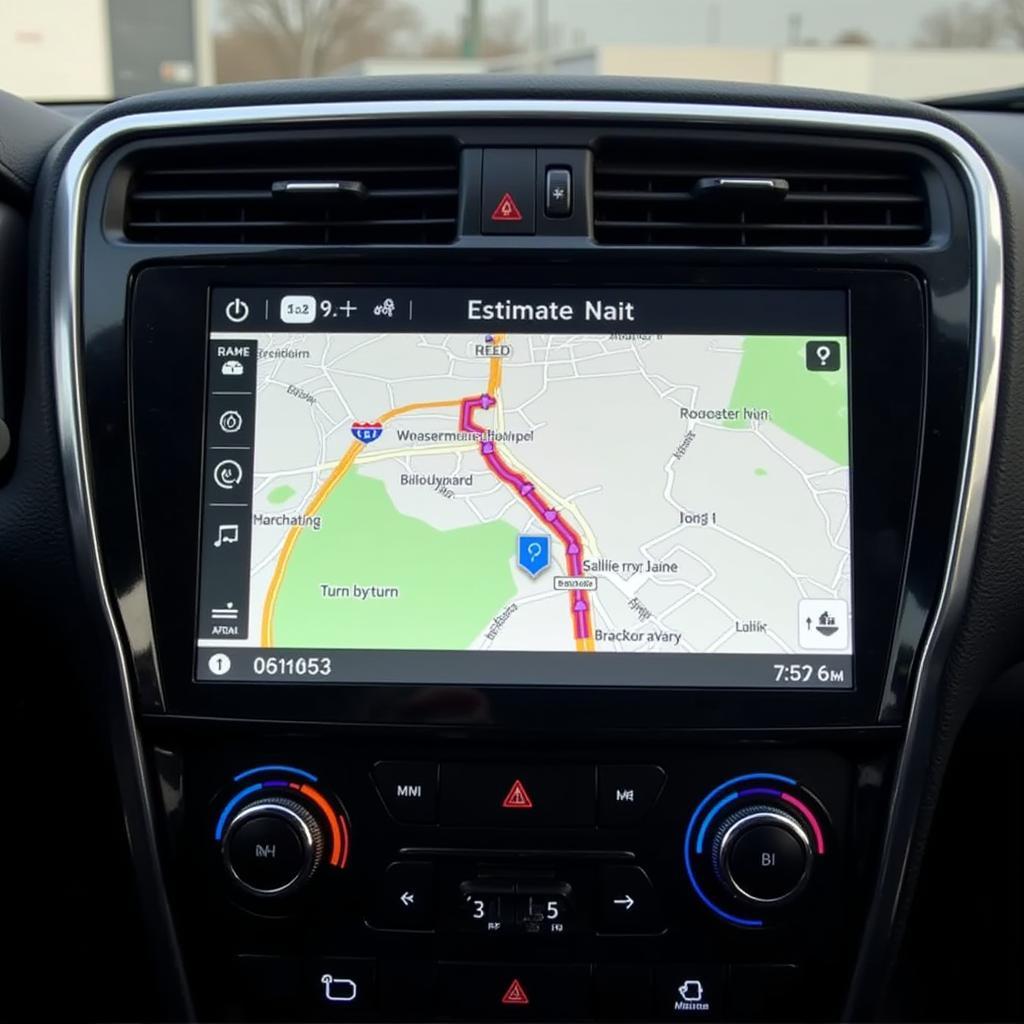A flat battery in cold weather is a common and frustrating experience. Temperatures plummet, and suddenly your car won’t start. This article delves into the science behind why cold weather kills car batteries, offering practical solutions, preventative measures, and expert advice to help you avoid this chilly predicament. Learn how to jump-start your car and when it’s time to replace your battery.
 Car jumpstart in cold weather
Car jumpstart in cold weather
Why Does Cold Weather Drain My Car Battery?
Cold temperatures significantly impact a car battery’s ability to provide power. The chemical reactions inside the battery that produce electricity slow down in the cold. This reduced chemical activity means less cranking power is available to start your engine, which demands more power in cold weather due to thicker engine oil. It’s not that the cold drains the battery, but it reduces its ability to deliver power efficiently. What’s worse, if your battery is already weak, cold weather can be the final straw. Check out our article on car battery discharge causes for a deeper dive into the reasons why your car battery might be losing its charge.
How to Tell If Your Car Battery is Affected by the Cold
Several signs indicate your car battery is struggling due to the cold:
- Slow engine cranking: The engine turns over slowly or struggles to start.
- Dim headlights: Headlights appear dimmer than usual, especially when the engine is off.
- Clicking sound when turning the key: A rapid clicking sound indicates a low battery voltage.
- Dashboard warning lights: Check engine light or battery warning light may illuminate.
- Malfunctioning electrical systems: Power windows, radio, and other electrical components may not work correctly.
 Checking car battery for cold weather symptoms
Checking car battery for cold weather symptoms
“In my experience, most cold weather battery issues are preventable with proper maintenance,” says John Miller, Senior Automotive Technician at Miller’s Auto Repair. “A simple battery test can save you a lot of trouble down the line.”
How to Prevent a Flat Battery in Cold Weather
Proactive measures can significantly reduce your risk of a flat battery during winter:
- Get your battery tested: Have a mechanic test your battery’s health before winter arrives.
- Keep the battery clean: Corrosion on the terminals can impede current flow. Clean them with a baking soda and water solution.
- Park indoors: Parking your car in a garage or covered area can shield the battery from extreme cold.
- Limit short trips: Short trips don’t allow enough time for the alternator to fully recharge the battery.
- Turn off accessories: Avoid leaving headlights, radio, or other accessories on when the engine is off.
Want to learn more about keeping your car battery in top shape? Explore our guide on car start without battery for alternative starting methods.
What To Do If Your Battery Dies in Cold Weather
If your battery dies due to cold weather, you have a few options:
Jump-Starting Your Car
Jump-starting is the most common solution. Connect jumper cables correctly to a working battery, ensuring proper polarity.
Using a Battery Booster Pack
Portable battery booster packs are a convenient alternative to jump-starting. They provide enough power to start your engine without another vehicle.
If you’re considering upgrading your car’s audio system, our recommendations for the best dab bluetooth car radio might be helpful.
Calling for Roadside Assistance
If you’re uncomfortable jump-starting your car or lack the necessary equipment, roadside assistance can provide help.
“Remember, even with a jump-start, a severely weakened battery may not hold a charge,” warns Sarah Johnson, Lead Electrical Systems Engineer at Johnson Automotive Solutions. “It’s crucial to get your battery tested and replaced if necessary.”
Conclusion
A flat battery in cold weather is a common problem, but understanding the science behind it and taking preventative measures can help you avoid this frustrating situation. Regularly testing your battery, keeping it clean, and limiting short trips can significantly improve its performance in cold weather. If your battery does die, knowing how to jump-start your car or using a portable booster pack can get you back on the road quickly. Don’t let the cold leave you stranded! If you need professional help with your car radio installation, consider checking out who installs car radios in my area.
FAQ
- Does cold weather permanently damage a car battery? Extreme cold can shorten a battery’s lifespan, but moderate cold typically doesn’t cause permanent damage.
- How often should I test my car battery? It’s recommended to test your battery at least twice a year, especially before winter and summer.
- How long does a car battery last? Most car batteries last between three and five years, but various factors can affect their lifespan.
- Can I leave my car battery charger on overnight? While some chargers are designed for overnight charging, consult your charger’s manual for specific instructions.
- What type of battery is best for cold weather? AGM (Absorbent Glass Mat) batteries are generally considered more robust in cold climates.
- Does a key fob battery affect car starting? Find out the answer in our article about if my key fob battery dies will car start.
- How can I tell if my alternator is bad? A dimming of headlights or other electrical issues could indicate a faulty alternator. Consult a mechanic for proper diagnosis.


